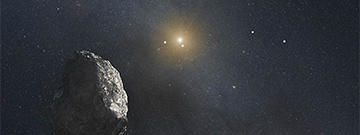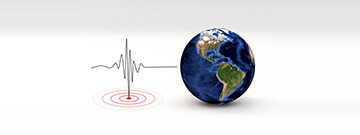
Earthquakes: A Seismic Saga
The Earth is a spectacle of constant movement. Periodically, it commands our attention with displays of power—earthquakes. These events are tied to the intricate movements of the Earth’s tectonic plates. Tectonic plates, the giant fragments composing Earth’s rigid outer part of the earth, or lithosphere, shift gradually, and there are three main types of tectonic plate boundaries.
Convergent boundaries occur when two tectonic plates move towards each other. An example of this would be the boundary between the Indian Plate and the Eurasia Plate. As they move towards each other, the Himalayan Mountain range is pushed upwards.
Divergent boundaries occur when two tectonic plates move away from each other. As a result, there is a gap where magma rises and forms a new crust. An example of this would be the boundary between the Eurasian Plate and the North American Plate, as they are gradually moving away from each other.
Transform Plate boundaries occur when tectonic plates slide against each other. This is the only tectonic plate boundary that causes earthquakes; since plates don’t smoothly glide, they can get locked into position and suddenly release. The release is felt as an earthquake.
The San Andreas Fault, located in California, is a significant geological feature. Periodically, it experiences seismic activity, reminding us of Earth’s constant changes. This transform plate boundary sees the Pacific Plate sliding past the North American Plate, and this slow, periodic movement has led to several powerful earthquakes.
Tectonic plates and earthquakes are crucial elements of the dynamic processes that mold our planet. Earthquakes and tectonic plates continuously reshape the Earth’s surface, serving as a constant reminder that our planet is in motion even when we appear to be standing on stable ground.
Source:
“The Science of Earthquakes.” ![]() The Science of Earthquakes | U.S. Geological Survey, Accessed 10 Sept. 2023
The Science of Earthquakes | U.S. Geological Survey, Accessed 10 Sept. 2023
“Seismology: UPSeis: Michigan Tech.” ![]() Michigan Technological University, Michigan Technological University, 4 Oct. 2021
Michigan Technological University, Michigan Technological University, 4 Oct. 2021
Scientific Peer Review by Alysia Mandato

On April 8, 2024, we will witness a mesmerizing event. A total solar eclipse is upon us, and here at the Science Center, we can explore this celestial phenomenon in many ways.
But first, what is this event? A ...

Climate change is a big deal. We’ve all seen news stories about greenhouse gas emissions, rising temperatures, and the hole in our ozone layer. However, what tends to sometimes be overlooked is climate change’s ...

In the captivating world of health care, a fascinating transformation is taking place—a rise in Artificial Intelligence, or AI! Picture a world where smart machines team up with doctors to revolutionize medicine, making ...

Hydroponics, a contemporary farming method, redefines how we grow plants, offering a fresh approach to cultivating crops that differs from traditional soil-based farming. This innovative technique doesn’t rely on soil ...

In our solar system, the eight planets—Mercury, Venus, Earth, Mars, Jupiter, Saturn, Uranus, and Neptune—are talked about more than anything. While the ...

Quantum computers are on the forefront of technological advancement. These machines, unlike any traditional computers you’re familiar with, harness the ...



